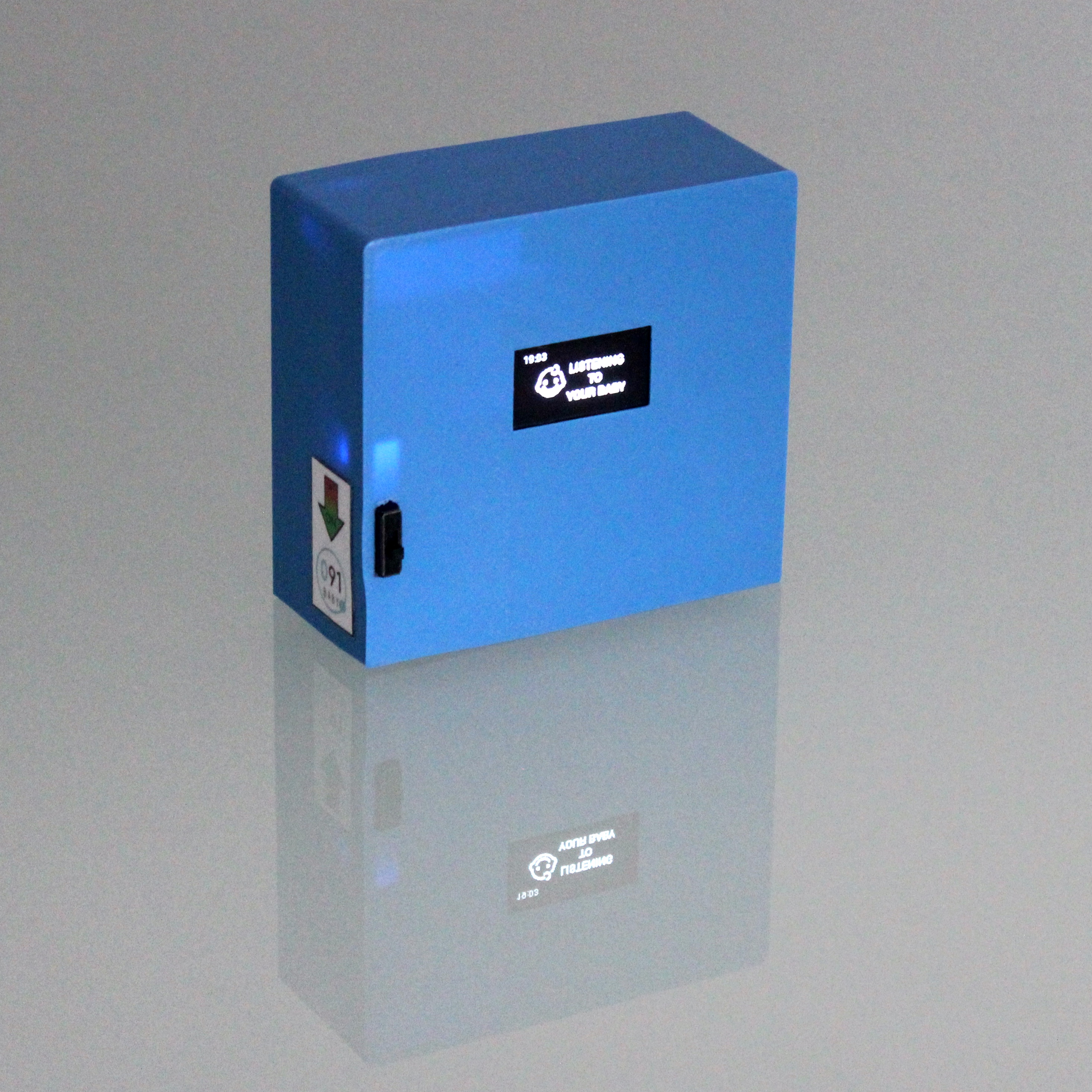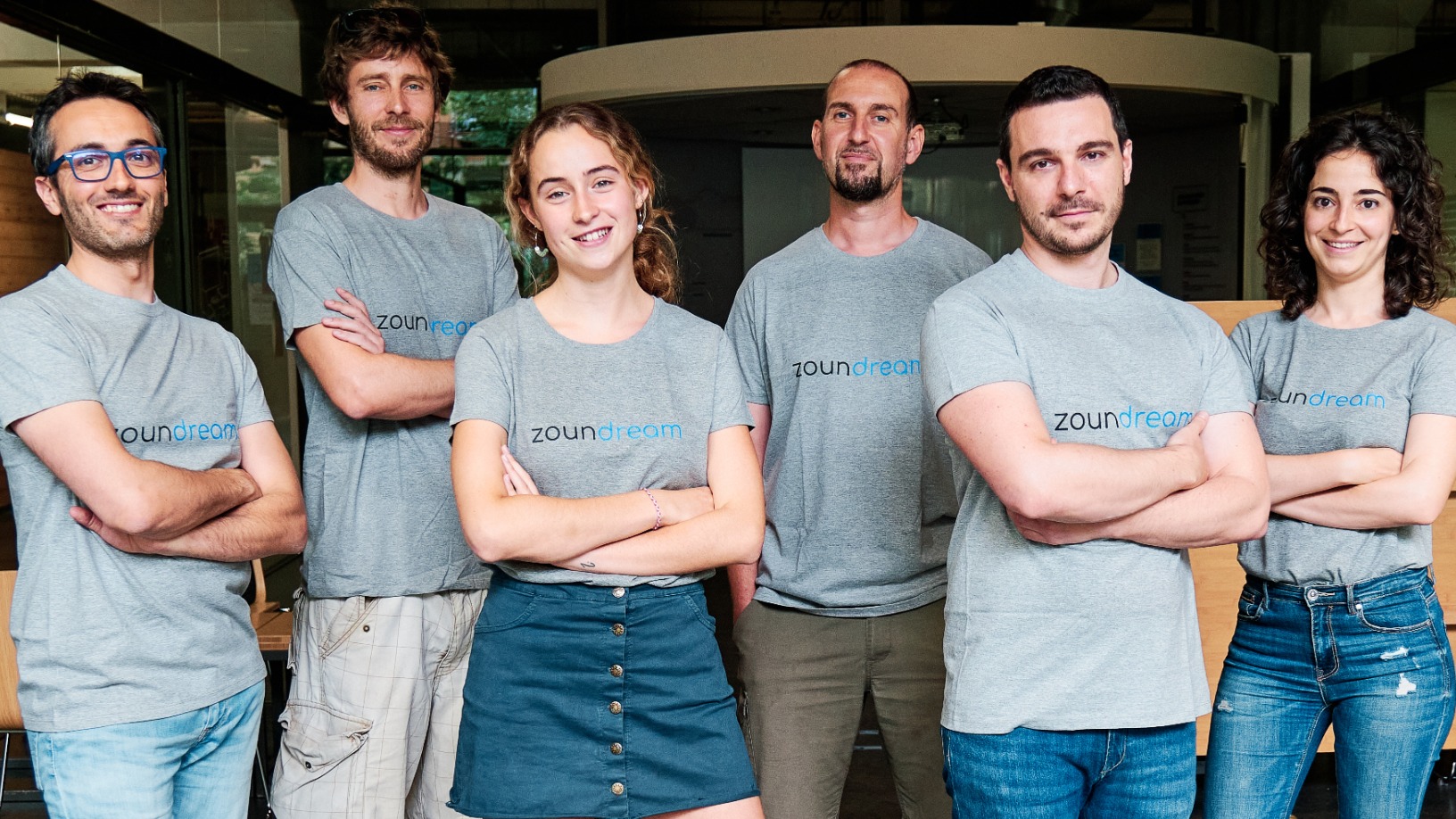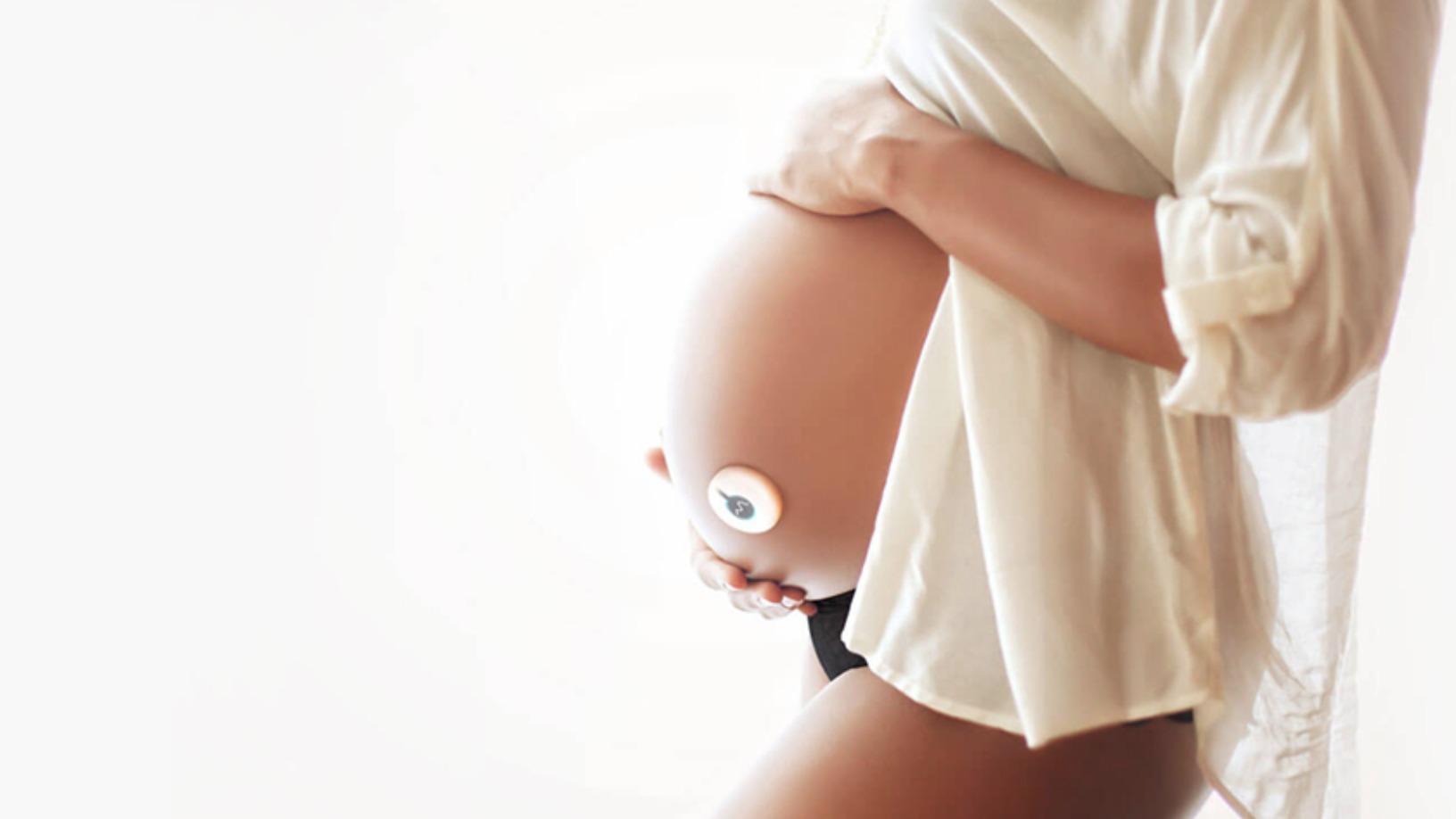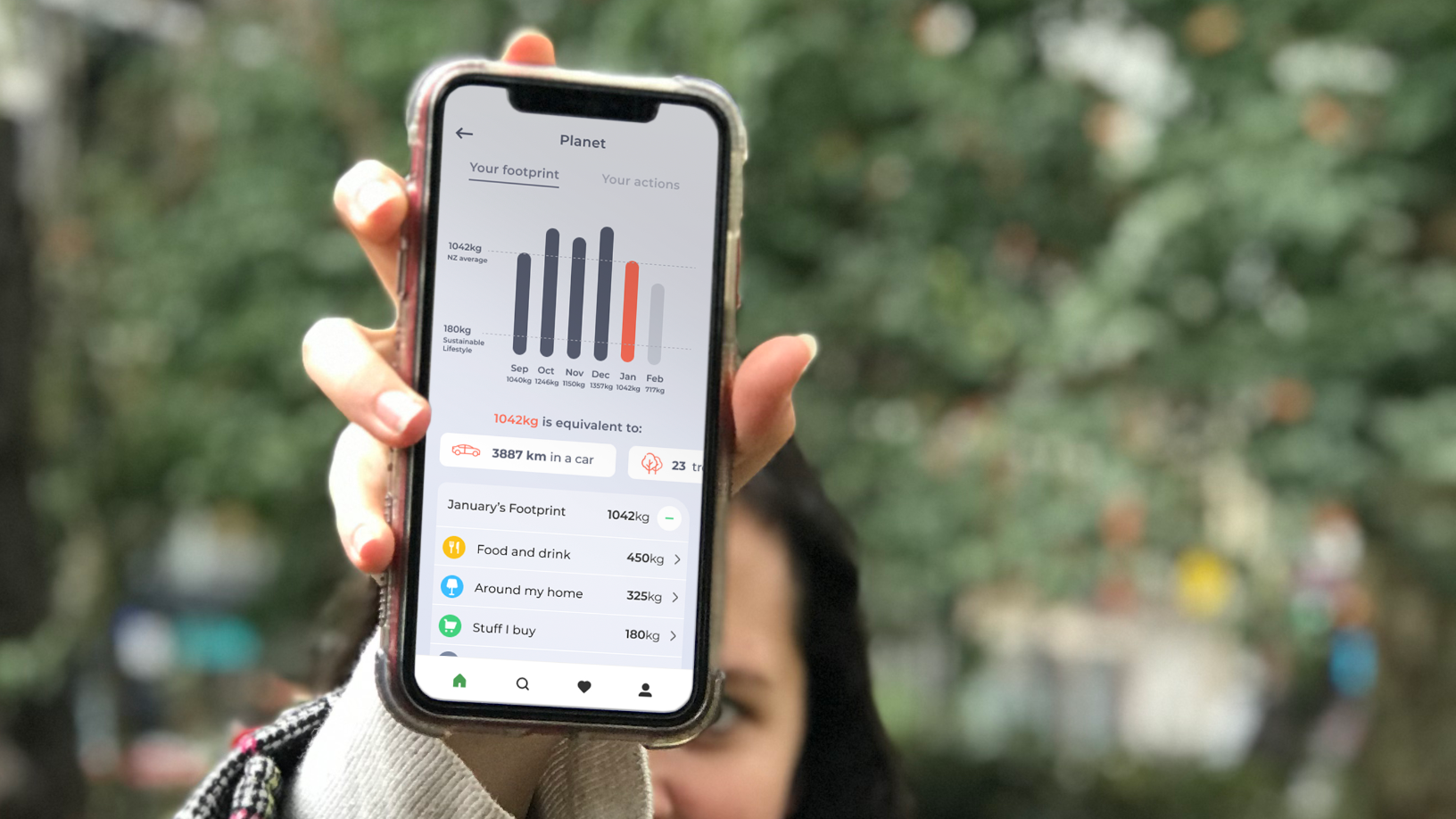Anyone still remembers Look Who’s Talking, the popular movie from the ’90s featuring Bruce Willis as the voice of the wisecracking baby, articulating his commentaries and demands?
Zoundream, a two-year-old startup based out of Barcelona and Basel, has turned fiction into reality by “translating” baby cries. Its team of data and AI scientists has produced a baby monitor capable of detecting a baby’s cries and deciphering them for parents, based on five basic needs – hunger, sleep, pain, gas discomfort and cuddles.
The solution banks on the thousands of hours of babies’ crying it has amassed, which it analyzed by means of spectrograms. During the first six months of their life, babies cry two to three hours a day on average. What started as a simple idea of understanding babies’ immediate needs through their cries has since evolved into a deep tech solution also capable of detecting potential pathologies and development disorders such as autism early on.
Zoundream’s product is still pending commercial release. Even so, the startup has attracted strategic partners such as Generali, the largest insurer in Italy and one of the world’s biggest. It is also in talks with baby monitor manufacturers to integrate its software in their hardware and IoT devices by 2022.
The company has about €1m in funding and CHF50,000 in revenue to date. It currently targets over CHF4m in revenue by 2023, based on projected rapid market traction and commercial expansion across Europe and the US.
CompassList interviewed Zoundream’s CEO and co-founder Roberto Iannone at the Mobile World Congress 4YFN conference in Barcelona in June 2021 to learn about the startup’s ride so far in scaling rapidly and its growth targets. Iannone is a recent INSEAD Global Executive MBA graduate, and last worked in operations at Sygenta and at Monitor Deloitte for more than 10 years combined.
This interview has been edited for length and clarity.
How did Zoundream begin? What motivated you to leave the corporate world to make the risky jump to startups?
It was a combination of different things all coming together at the same time. I had a newborn daughter; she’s now three years old. It was wonderful, of course, but also very difficult, especially during the first six months of birth.
I thought it would help to read up on newborns. E.g., I learned that a baby’s cries convey a lot of information about its health and needs, among other things. But that was it. There’s a lot of research out there but no tools, whatsoever, for new parents. So I saw an opportunity.
Meanwhile, I was doing my Executive MBA at INSEAD. I learned about entrepreneurship, something I had never considered before. I thought I was a corporate person; I didn't care about running my own company. That definitely changed during INSEAD.
How did you build a deep tech solution from scratch without having any technical skills? What about the other co-founders?
I had the idea, and I could see the business behind it – I could run the numbers and I could think about business models and do the research to understand the likely demand from customers. But I couldn't build the product. Hence I started looking for co-founders.
There’s a lot of research out there but no tools for new parents. I saw an opportunity
The first person I contacted was Paolo Ingraito, an old friend of mine who has been working in sound and software development for over 20 years. He's the kind of geek who’s always passionate about developing something new.
I also got in touch with Stavros Ntalampiras, a Greek computer science professor teaching at the University in Milan. His name kept popping up in the relevant research articles that I read about this field. I didn't know him personally, but his research fitted very well with what we were trying to do. That's how we started working together. This has also enabled us to leverage the work that he has done for many years.
Another co-founder I contacted was Ana Laguna Pradas, a mother of two and a data scientist from Madrid who is well known in Spain and Latin America. The fifth member of our founding team is Matteo Ingravalle. He’s mainly involved in IT and operations. He’s the backbone of the company.
How did you collect the initial data?
Ntalampiras had been collecting data from a hospital for many years, focusing on the application of AI in baby cries to translate their needs.
One of the biggest challenges for us has been data collection and categorizing the data. You need thousands and thousands, even millions, of samples of baby cries. In the beginning, we gave recorders to parents, asking them to record their babies 24 hours a day and to indicate to us when the baby cried so we could extrapolate the sounds from the recording.
That's how we collected data samples. Then to label data, you’d need to know what the baby was crying for, his or her age, and a lot of other information.
Briefly, how does the technology work? How did you develop it? How long did it take?
Data collection was the first step, which was extremely time-consuming and took nearly six months. The next step was to develop the best solution to detect baby cries. The data has to be filtered in order to be translated into babies' needs and to identify potential pathologies.
It’s crucial to distinguish between what a baby cry is and what isn’t. That's not easy because babies make a lot of sounds. We spent more or less one year, fully dedicated to crying detection.
Once we had a decent cry detection algorithm, we developed our own device. We are not a hardware company, but we built our device in-house to collect data, which we are still using now as we’d always need more data to keep testing.

How do the hardware, its software and the app work together?
The software in the device picks up the sound, and processes and translates it. We use the app to send parents notifications whenever their baby is crying and the unmet need that’s deciphered, in just a few seconds. The app is integrated with the device, which works like a baby monitor. But unlike traditional baby monitors, it translates cries in real time.
You are not selling the device, so what is Zoundream’s income model?
The core of our business is the software and the data science. We are looking to license our software to baby monitor and IoT device manufacturers.
Would it be possible to use the app directly on a smartphone and use the phone to collect the data?
Technically, it could be feasible but it's something I wouldn't do. The first problem is the data collection itself – you can’t collect the same amount of data and with the same quality using an app.
Another important point is, we are working on pathology detection, which wouldn’t work with a mobile app. Pathology and developmental disorder detection is the core of our business, while cry detection and translation are just enablers. It’s been widely demonstrated that babies with developmental disorders cry differently.
You're currently testing and iterating the technology. How many devices have you given away?
Approximately 105 families are using it right now and we are constantly rotating it across the world, mostly in Europe and Asia. We are also planning to start in Central America.
Could you tell us more about how you involved the testers?
We give them the device for free; it's something people are very curious about. The publicity is mostly by word of mouth; I don't think we ever spent a single euro on marketing.
For pathology detection, we work with hospitals. They are interested in our solution as it is very niche. We have built the technology to capture and analyze data in a consistent manner for many months. This allows us to research in pathologies like autism and neurodevelopmental disorders such as attention deficit hyperactivity disorder and fetal alcohol spectrum disorder.
How many health institutions have you partnered?
Currently three, all at different stages of development. The most advanced are with the Obstetrics department of Hospital Clinic Barcelona and with KOLOB Autismo [the first center in Peru to specialize in the diagnosis, treatment and research of autism]. We also have ongoing discussions with Mount Sinai Hospital in Toronto and the Private Children Clinic in Lyon, France.
What is the competitive landscape? How do you ensure you stay competitive?
The field of pathologies and development disorders has been mainly studied by research centers and hospitals, but they don’t rely on our technology.
In cry translations, there are some startups and institutions that built very decent solutions, but with a different approach. They built mobile apps, which is definitely the easier way to reach out to parents. But again, in my opinion, an app just gets up to a certain point and never beyond that. The volume of data that we can collect through our device from every single family is incomparable, in terms of the metadata and the quality of the data.
The biggest challenge for us has been speed
Have you patented your technology?
Yes, we have. But if you were to ask me, do I feel safer now? Or how much would I rely on the patent? I’d say, not too much. Our security lies in both the data and the software – it's such a niche that in order to develop what we did will take years, regardless of the patent you have.
How have you managed to build customer trust in terms of personal data protection?
We follow the EU General Data Protection Regulation (GDPR), and we have also lawyers working closely with us to make sure that our procedures are GDPR-compliant. Every family, at any point, can get access to their recordings and the data collected.
What have been your greatest challenges so far? And what might you expect to face in the near future?
The biggest challenge for us has been speed. We are doing something that was completely unexplored before; it’s normal to make mistakes, to try and restart all over again. On the other hand, this game is all about speed. Right now we are ahead, but we need to be constantly ahead with the best technology possible in order to take the entire market, or at least a big part of it.
How have you funded your business so far?
We closed a seed round last year with a couple of angel investors and two early-stage VCs, Loyal from Canada and Mission Gate in the US. We will seek new funding, but we haven’t opened any round yet. We started bootstrapped, with our own money. We also got public grants and some awards from Switzerland and Europe.
In Switzerland, it’s very easy to get public grants as in-kind contributions, which is obviously as helpful as cash. We got a little bit of both, financially in the range of CHF20,000 to CHF50,000.
In your opinion, what were the metrics that convinced the investors to back you?
There were various reasons but the VCs that invested in Zoundream had been following me for a long time and they got to know me well. They also saw the traction and attractiveness of what we are trying to achieve.
What milestones are you targeting by end-2021, and what next?
We’d like to start clinical trials with at least two or three hospitals for different pathologies. We also want to enter the insurance sector more strongly. Currently, we are working with Generali on child pathology detection, and it’s going well. It’s not an immediate goal but definitely an interesting business model for the longer term.
Another important milestone will be finalizing licensing agreements with baby monitor companies. Last but not least, we want to be able to claim we have the best technology for baby cry analysis in the world. I spent months doing benchmarks and I can say we are there – that’s something that I'm incredibly proud of.










